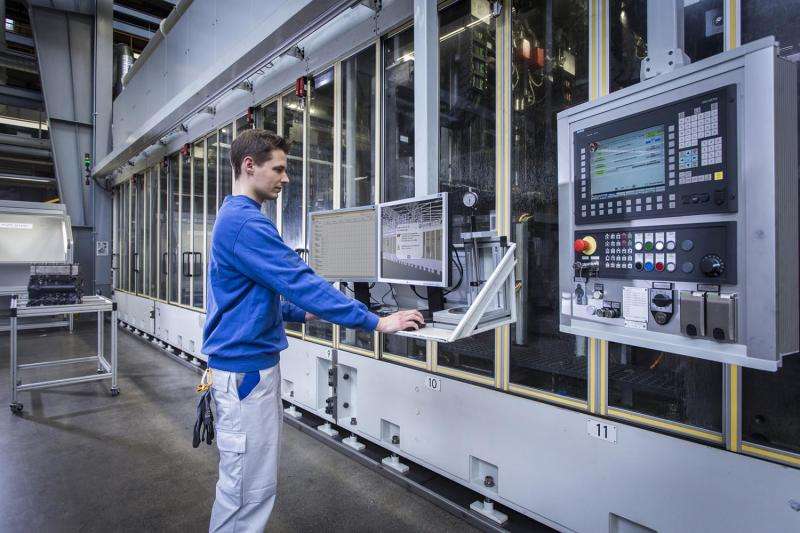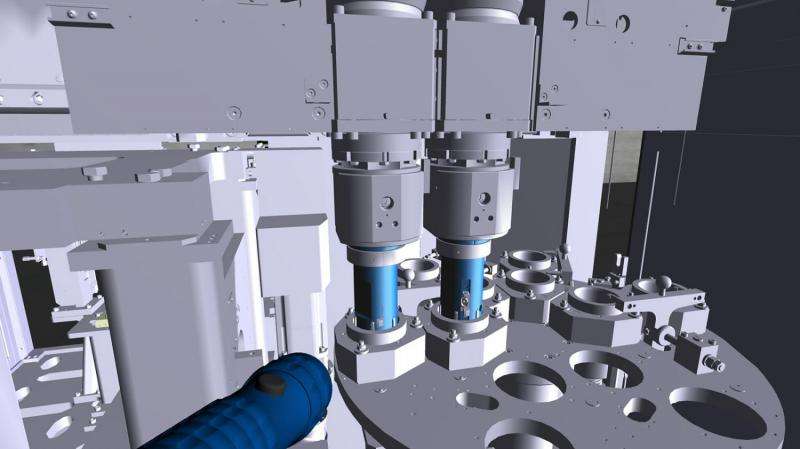Better quality control with digital assistance systems

Errors can be spotted early and resources can be saved when many individuals share knowledge in a company. This is the case with a honing machine used to hone crankcases at VW's engine plant in Salzgitter: A digital assistance system developed by Fraunhofer researchers will enable significantly more workers to ensure the quality of honing in the future than now.
Every manufacturing operation, be it in the automotive industry or another sector, has to run flawlessly. If even the smallest tool is worn, finished parts may have to be rejected. Cost and resource efficiency make it essential to eliminate sources of defects and thus ensuing rejects. Since this is Volkswagen's mission in Salzgitter, too, they want to optimize the process control of honing machines (see the box). Researchers at the Fraunhofer Institute for Factory Operation and Automation IFF in Magdeburg are helping the company improve control with a digital assistance system. The system makes it possible to share knowledge about the machine among several individuals. Any staffer working on the machine should be able to assess crankcase quality and to inspect the honing machine – and take appropriate action, e.g. change a tool, whenever necessary. Until now, quality control has been in the hands of a single expert.
Assistance system guides users through the quality check
The digital assistance system guides workers step by step through the daily quality check on the machine. A digital checklist as well as virtual models and the expert's know-how are stored in the system. The user interface has been kept simple: Staffers see a complete virtual model of the equipment to the right on a large monitor and the checklist to the left. Any tool up for inspection on the checklist is marked by the system on the virtual model of the equipment. "The experts are informed which tool they have to inspect and where the tool is located," says Tina Haase, a researcher at the Fraunhofer IFF. The system also provides assistance during inspection itself: Images show the user what the tool ought to look like ideally and what signs of wear preclude further use.

The system also assists staff with measured parameters, especially when they are assessing and evaluating collected data. The system compares measured values entered in the checklist by staffers with stored tolerances.
The carmaker aims to use the digital assistance system to enable every employee to analyze and correct the process him or herself. Employees should be acting, i.e. intervening preventively and rectifying errors long before rejects are produced, rather than merely reacting to defective manufacturing.
The system is currently a prototype. The researchers at the Fraunhofer IFF intend to expand the assistance system in another stage. Workers have to correct the manufacturing process whenever a defective product, in this case a crankcase, is produced. What is the impact when certain parameters are changed? The researchers now intend to remove the housing enclosing the machine in the assistance system virtually in order to visualize the causal relationships. This will enable staff to view the honing process and test the effect of individual parameters on manufacturing in the system.
Provided by Fraunhofer-Gesellschaft





















